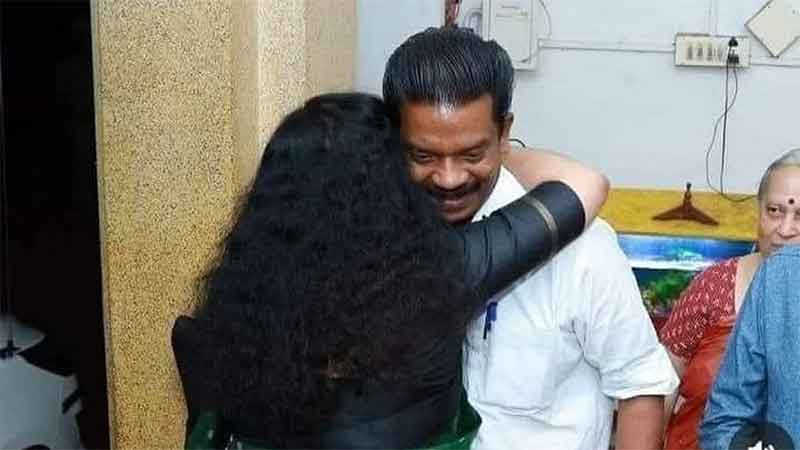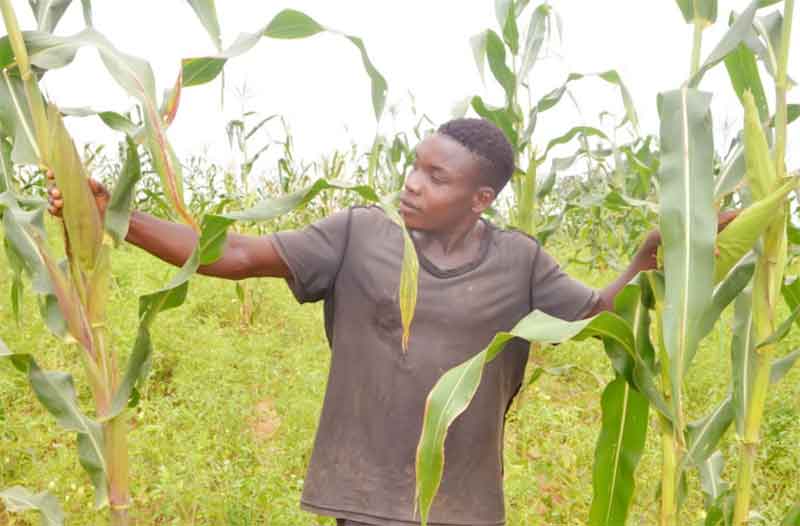
Divya S Iyer, an IAS officer from Kerala, posted a picture on her social media a few days ago of her hugging CPM leader K Radhakrishnan, who recently quit the state cabinet as he was elected to the Lok Sabha. This picture has been a topic of discussion on social media for the past few days. A few celebrated this as a picture of breaking the taboo of a woman hugging a man in a patriarchal society like Kerala where women are morally policed for the slightest of gestures. When this comes from a woman bureaucrat, there was a discussion about how we as a public need to accept more of such open expressions of respect and admiration in public displays.
Meanwhile, this picture and how certain people celebrated it have sparked a different discussion about the invisibilisation of how caste operates in such celebrations in our everyday lives. How is caste hidden in a gesture of respect and admiration? If we dissect this issue intersectionally, when we bring up the gender aspect of a woman hugging a man, why are we not seeing the practice of caste in that picture? As her last name indicates, Divya S Iyer is a Brahmin, and the minister, K Radhakrishnan, belongs to a Dalit community. Of course, this picture is challenging the patriarchal and moral policing nature of our society, but one also needs to highlight how caste is invisibly operating in such celebrations.
This discussion was fuelled when celebrated Malayalam author Benyamin posted this picture in Facebook with a caption in Malayalam which is translated as, “A hug with a thousand meanings in the time of exclusion, Salute to you dear.” Later when the social media criticised this, he reposted it with an explanation. In that explanation, he mentioned how this is not the first time that Divya S Iyer has hugged someone from the marginalized, Dalit community, someone who does not belong to her caste, economically backward background and blacks, and this is how her lifestyle is. And he has posted similar pictures of her hugging people from different communities to add more validations to it.
This particular caption by Benyamin shows how he is trying to project Divya S Iyer as a Brahmin woman. In that post, he is celebrating a Savarna woman for hugging someone from the lower ladder of society who ideally should have been kept at a distance according to the hierarchical structure of caste as mentioned in the Manusmriti. Moreover, in his explanation, Benyamin specifically mentioned ‘someone who does not belong to her caste.’ Although he mentioned that one should unsee the caste in his Facebook post and see it with a humanitarian lens. But one cannot resist this by viewing how castes operate in our society. Across social media, Divya is being celebrated for the benevolence of a savarna women for hugging someone from the marginalised irrespective of being the ‘Iyer’. The hug by Divya is reflected as an act of liberality she, as a Brahmin woman, carries within her, irrespective of her power position.
The larger narrative is trying to build a picture of a Savarna woman hugging someone from the marginalised community, transcending her caste identity and boundaries set by the Brahmanical society. This also shows how marginalized bodies have become objects for the Savarna to publicize their progressiveness and thereby glorify them.
On the other hand, this also illustrates how the Savarna guilt is working here. In a society where caste is practiced visibly and invisibly in everyday life, the Savarnas are trying to project themselves as a group that has got past untouchability. They are trying to build a narrative where they are ‘allowing’ a Dalit to hug and touch them, which was not the case before. This performance has always been the case of the Savarnas in the everyday practices of life where they constantly try to get past their guilty consciousness of the past but end up asserting the caste unknowingly or knowingly, visibly or invisibly, which is the case of Divya S Iyer here. Such actions by those in the hierarchy’s upper ladder are always celebrated. In this case, the hug given by Divya S Iyer, a Brahmin, is seen as beneficence to the Dalit minister or the Dalit community.
This also reflects the Savarna domination of holding the narratives in mainstream media and online platforms. They have the power to decide which narratives are to be spread. In a hierarchical society like ours, where the Savarna holds the majority power and control to decide and build the narratives favourable to them, the reason for this picture to be trending and being celebrated is not a surprise. For them, this picture shows how a Savarna is hugging someone from a marginalized section. That is, the body of a Savarna woman has become ‘touchable’ for a Dalit who is traditionally considered as untouchable according to the Varna system. As Dr Ambedkar said, “Caste is a notion; it is a state of mind.” This clearly shows how society has internalized caste and how invisibly caste becomes operational in our everyday lives.
Also, one needs to think about whether this hug would have been celebrated if it had been someone else. If it were a woman from a marginalized community hugging the minister, the way in which the public would have received this picture would have been totally different. We have witnessed such derogatory remarks in social media handles on the President of India, Droupadi Murmu, who is a tribal woman, and many such cases before. The moralistic society would have questioned the morality of the marginalized woman, and she would have been slut shamed, and the comments would have been vulgar in nature.
Subscribe to Our Newsletter
Get the latest CounterCurrents updates delivered straight to your inbox.
Another factor is that one also needs to think about why the culture of hugging never existed in India when we greet people. Rather, it was the folding of hands-namaste/namaskaram, that was practiced by people. This is very much linked to caste lines. We, as a society, did not practice it because we followed the norms of pollution and purity concept, where touching someone in the lower ladder of hierarchy was considered to impure oneself. Hence, the safest way was always to fold hands to greet people so that pollution and purity concepts of untouchability were maintained.
Divya S Iyer has asserted that she did not think of anything while hugging him and is hurt that a caste line was drawn from a gesture she did out of respect and admiration for the minister she gained while working with him. But that is now how the larger narrative has played out. The receivers celebrated and glorified her for doing this action as she being a savarna woman. This clearly reflects how our society has internalized casteism knowingly and unknowingly. And this is why this celebration of this picture needs to be critiqued.
Shruthy Harilal is a research scholar at IIIT Delhi. She specialises in caste, gender, and ritual. She is currently doing her PhD in Sociology on Theyyam of North Kerala.










































